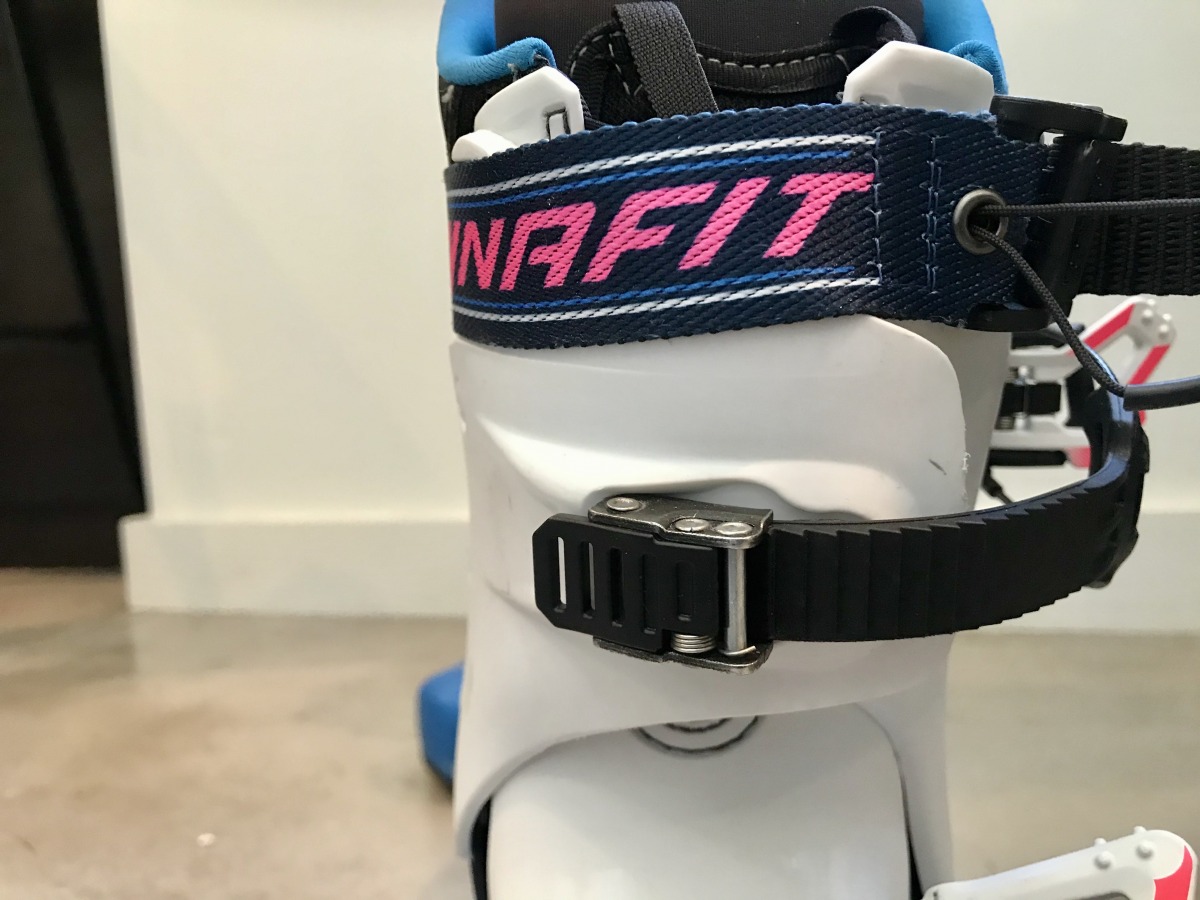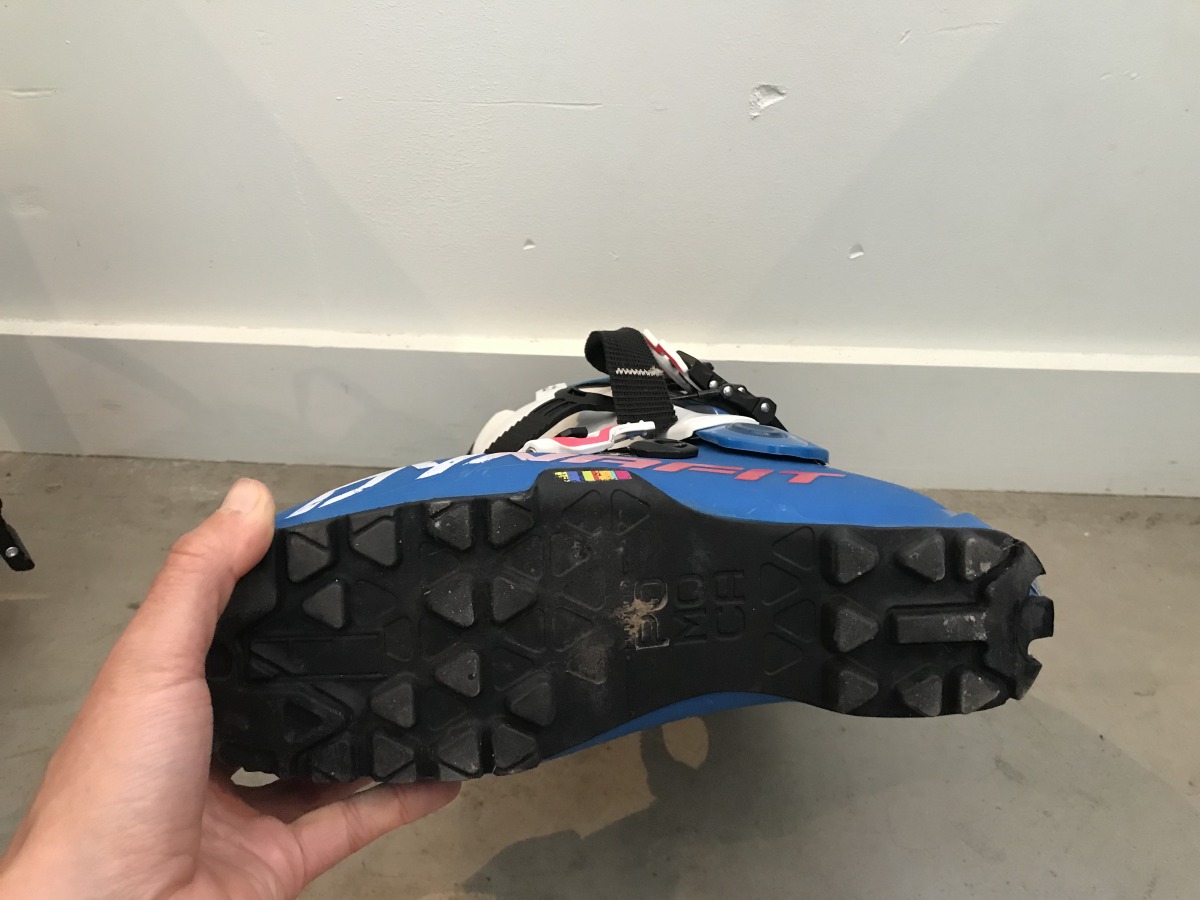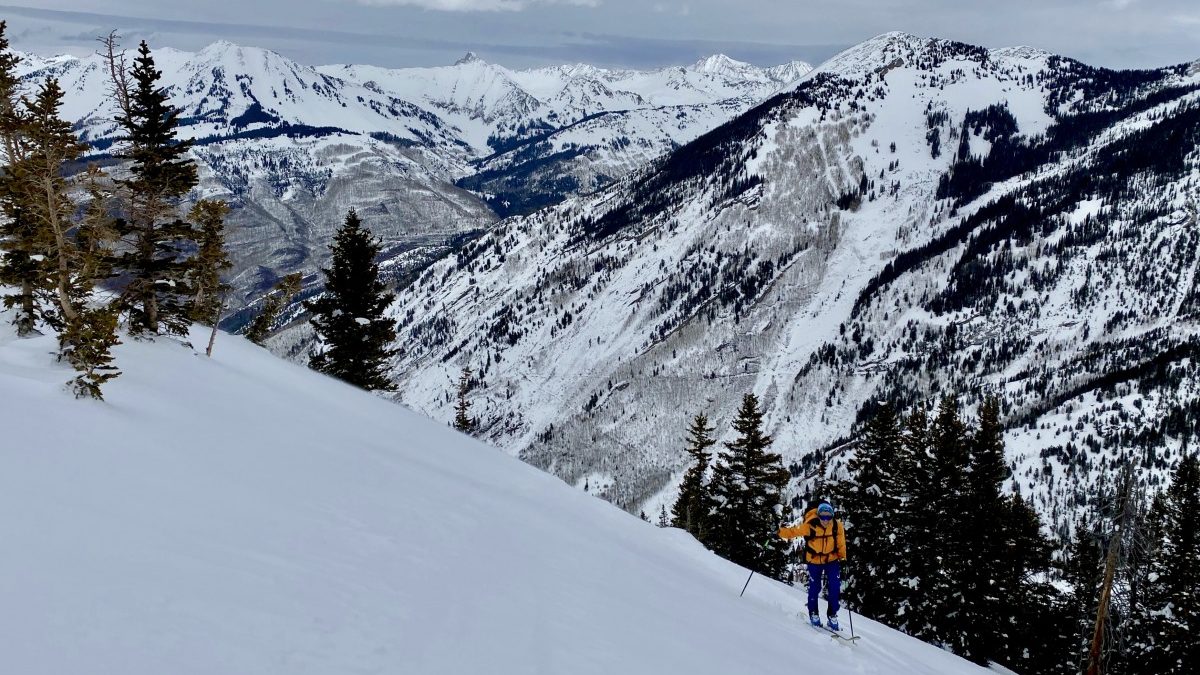
The Dynafit TLT 8 Expedition W touring boot proved its versatility on long backcountry powder tours, resort laps, and even a couple of skimo races.
From the top lip of Genevieve, a double black run on the flank of Telluride Ski Resort’s Palmyra Peak, the descent appeared near vertical and dotted with large boulder sized bumps. I pulled my Dynafit DNA race skis off my pack, clicked my TLT 8 boots into the light pin bindings and glanced over my shoulder. The closest racer I spotted was a guy roughly 30 yards behind me, not in my category, but still someone I wanted to beat. I dropped into the run, heart pounding, skis skittering across ice before hitting a chalky soft patch. I flexed into the boots, initiated a few jaunty turns before settling into a rhythm just on the edge of control. The run bottomed out with a luge path into tight trees for more steep turns with higher consequences.
Now wait a minute, you might be thinking. Why would this writer be using Dynafit TLT 8 Expedition CR boots with 65mm race skis? Truth is, I was scared. The Tellurando was my first ski mountaineering race and given the demands of the relatively steep course, I wanted to feel as confident skiing the descents as I felt grinding up the climbs. I’d spent weeks prior to the race hammering training laps on and off piste in both the TLT 8s and a more race oriented boot (La Sportiva Sytrons, reviewed here) and had nailed the fit on the TLTs, so much so I’d made the last minute decision at 6am on race day to opt for better skiability over slightly fewer grams. During those harrowing turns down Palmyra, I was thankful for it.
My day of racing in the TLT 8 Expedition boots speaks to the versatility Dynafit has long cultivated with the TLT series. The boot had not only accompanied me for training, but had also been my go-to touring boot for many snowy days leading up to the race. On long backcountry tours with mid-fat skis, in thigh deep powder, chunky wind crusts, resort groomer laps and spring corn, the boot proved its versatility again and again. Here’s my full run down on Dynafit’s latest TLT iteration, one that I suspect will be considered among the best yet.
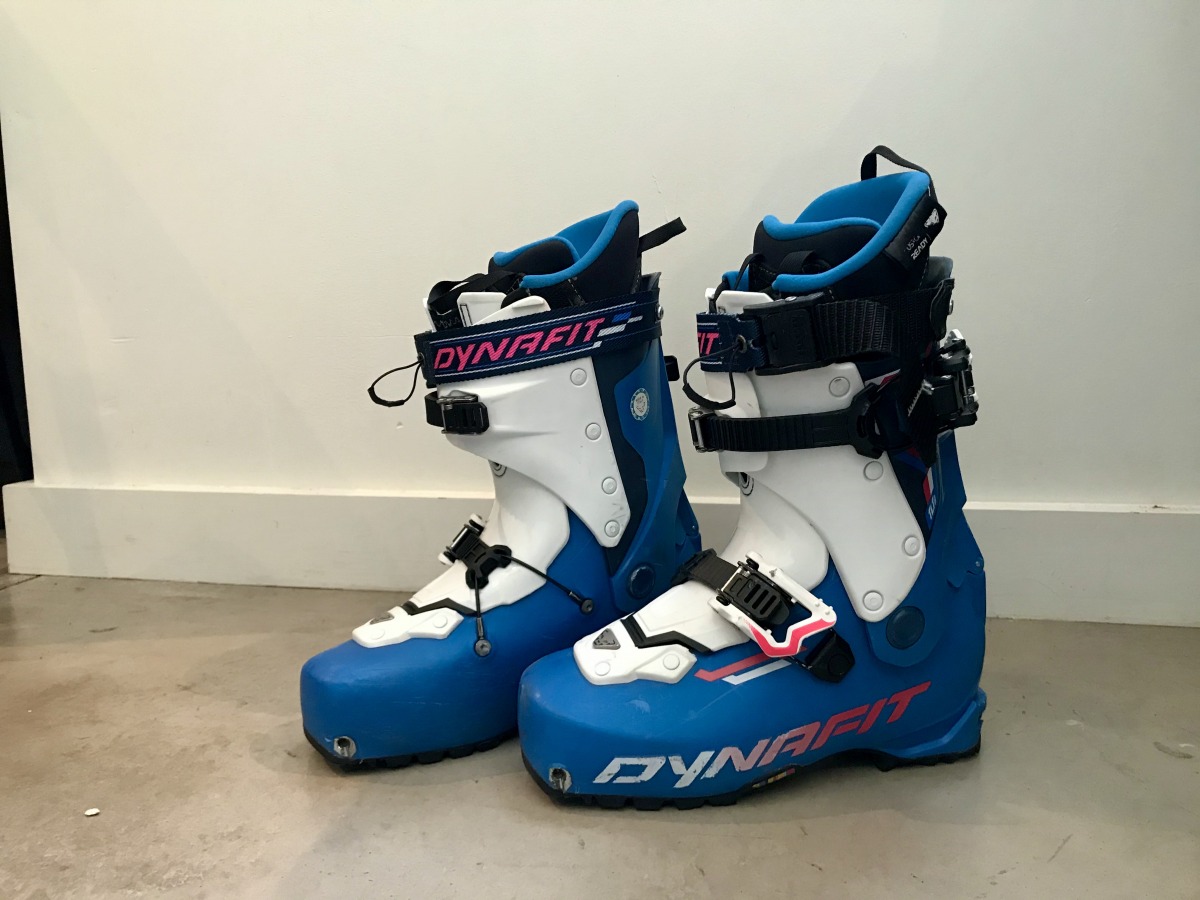
The Dynafit TLT 8 Expedition boots offer a few key upgrades including larger buckles, an upgraded Ultra Lock 4.0 system and a warmer liner than previous iterations.
History
In order to fully appreciate the TLT 8, it’s helpful to look to where it came from. TLT or Tour Light Tech series of boots has existed for so long as an acronym that has become a stand alone reference for ski touring. In my shorter history of ski touring, I watched it grow up from the TLT 5 back in 2009, the iteration where it dropped some serious weight and paved the way for the light touring boot explosion that followed. The TLT 5 and ensuing iterations tried some wacky experiments on its path to the current version, the TLT 8.
The TLT 5 started out with a small bellows reminiscent of the Telemark flex point on the ball of the foot. It was thought that slight articulation would lead to a more natural stride but this small flex turned out to be less than ideal while skiing (reviewed here). The TLT 6 addressed this by reverting back to a more traditional solid forefoot and became a staple of the fast and light world (read our review here). The TLT 7 then dropped the weight even further with two big additions: a one buckle cable tightening system that laced internally in the boot, and the Speednose to allow the boot to move the tech fits and thus pivot further back towards the ball of your foot. However, the internally laced cable was impossible to fix when and if it snapped and left many people confused about how to put it on (read Lou’s take for more).
By now we’re seeing a trend: a TLT model number divisible by 2 typically aligns with the most favorable iterations of the boot. Enter the TLT 8 which was tasked with cleaning up the mess the odd TLT 7 created. It brought along the positives — range of motion, lack of grams and Speednose — while leaving behind the undesirables — highly breakable, hard to operate cable system and general lack of skiing support. In this cycle of trial and error, the TLT 8 emerges as a front runner in the speed touring boot class with 46 years of history to back it up.
Features
The TLT 8 offers a few notable upgrades from its predecessors including larger buckles, warmer liner and upgraded ultra lock system. Dynafit replaced the one-buckle system of the TLT 7 with two ratchet straps that are user friendly and easy to dial in. The increased size of the buckle handles themselves allow for all adjustments to be made with gloves on.
I’ve found that the buckle system really does streamline transitions — two quick flicks and I’m ready to ski or walk and left wondering why I ever bothered to have a boot that requires a separate walk lever. Many skiers with smaller insteps could probably get away with never adjusting the lower buckle between skinning and skiing, thereby streamlining even further.
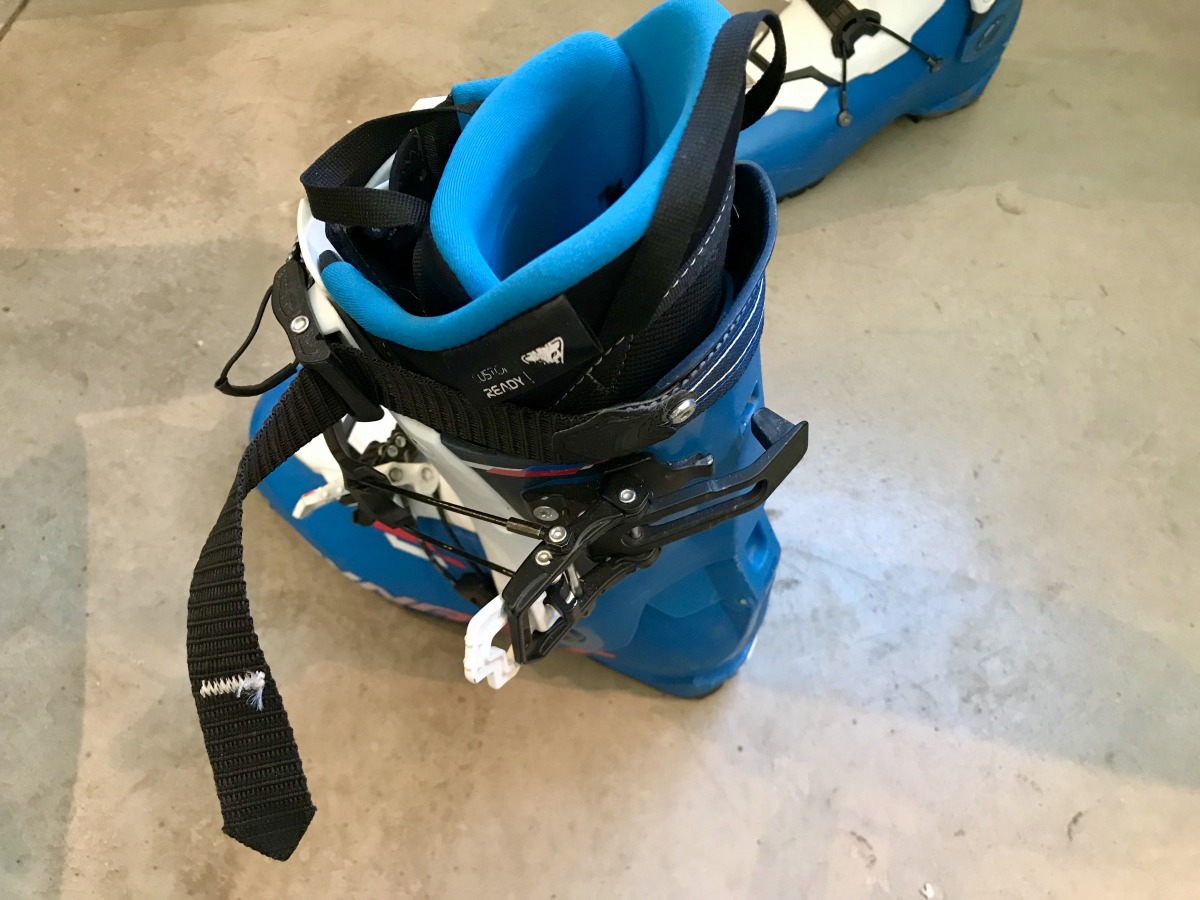
True to previous iterations, the TLT 8 Ultra Lock system is a two part buckle that allows you to flick the top white part forward while still maintaining some tension in the boot.

The TLT 8 Expedition liner is thicker than in previous TLT versions, which allows for more warmth and a dialed fit.
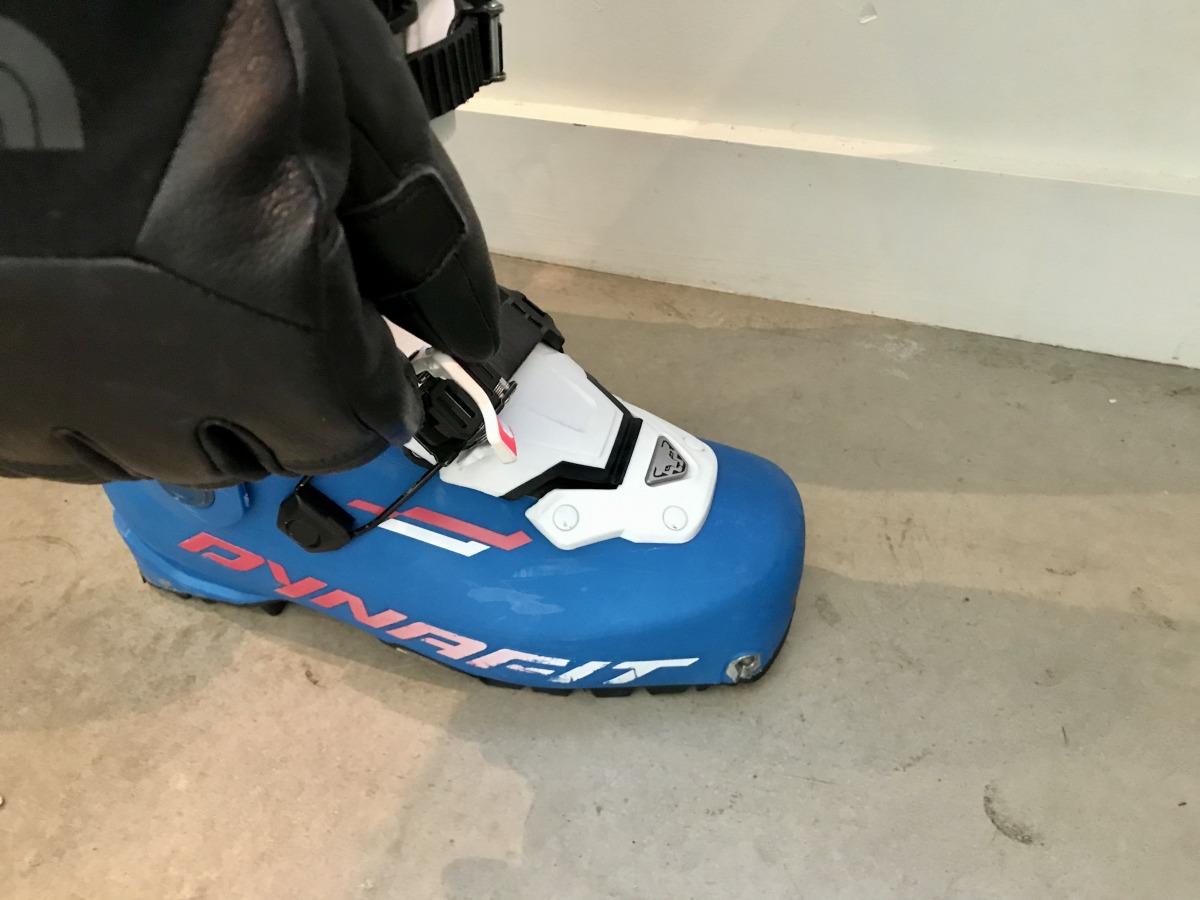
Owing to feedback many skiers gave on the size of previous TLT buckles, the new version offers larger buckles easy to adjust with thick gloves on.
Fit
After years of skiing boots in the 25 mondo range the wide toe box of the TLT 8 gave me confidence to downsize to the 24.5, a performance fit very snug out of the box. However, the fit was easy to dial with a heat mold. The thick cushioned liner offers a lot of give. I popped some Sole footbeds in during the mold and never had to think about fit again.
Uphill performance
Over the course of the winter, I logged many miles and vert on the boot. Generally, it was comfortable for all day wear, with the expedition liner being both comfy and warm. The Speednose allowed for a smooth stride easy to maintain for long climbs and traverses, and also to swing the skis around for kick turns. The Pomoca soles were grippy and secure on icy or loose bootpacks, or the occasional rock scramble.
My only gripe here is that due to the tongue construction and thick liner, I couldn’t fully engage the 60 degree range of motion. I often felt I hit a limit both on the front and back end of my stride, particularly on flats or slight downhills. This is a small price to pay for the warm liner and the downhill performance, but worth noting that the range seems less than advertised.
Downhill performance
To experience the full range of the TLT 8s, I used them in all my typical ski endeavors throughout the winter: resort laps, bumps, backcountry powder, crud and even a little corn. The TLT 8s consistently proved their versatility, and provided a stable, easy to drive boot that was a notable step up in stiffness and performance to the Scarpa F1s I had used for years prior. The boots seemed to really hit a sweet spot with a mid-width powder ski (I most often paired them with my DPS Cassiar 95s, reviewed here), though I occasionally used them to toy around on the aforementioned DNA race skis, which was probably more fun than skinny skis should be. I found the buckles easy to adjust if I wanted to crank them down for a little extra security on steep slopes. Of course they’re no four buckle resort boot, but they don’t claim to be. For a lightweight, versatile touring boot, I was pleased with the ski performance.
Areas for improvement
The liner tongue is thick and would often shift to one side during long skinning efforts. This would leave me with a pressure point on the side of my shin. It was easy to shift back, but annoying to need to.
As mentioned above, I found the boot to feel quite stiff in walk mode and couldn’t fully engage the 60 degree range of motion. Maybe this will change as I break them in a bit, time will tell.
It is notable that the Speednose is not on the list of new improvements for this iteration. This is a feature that is clearly here to stay. At this stage of the evolution of touring bindings, there are plenty of great lightweight options to pair with this boot. If you are looking to ski a Salomon Shift, Marker Kingpin or Fritschi Tecton, there are also plenty of other boots to seek out.
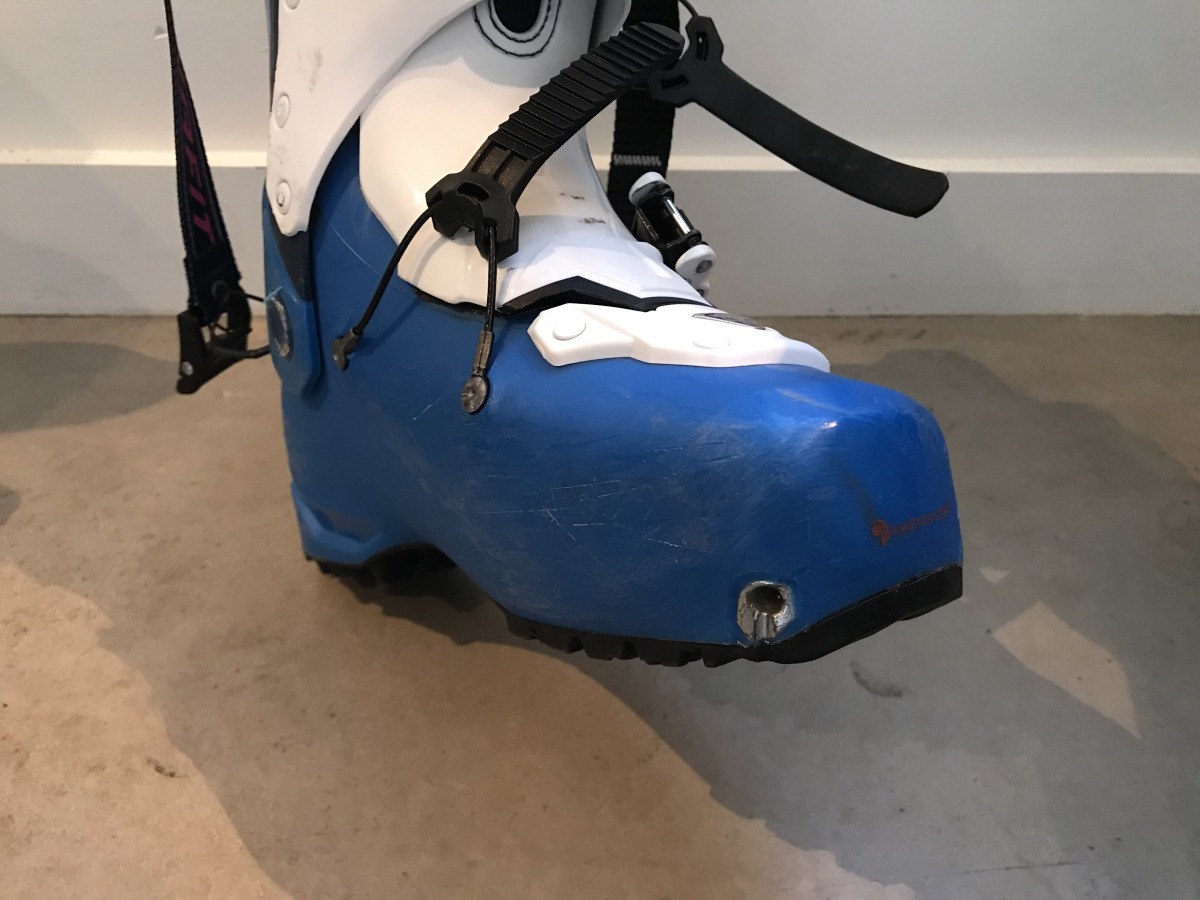
The characteristic Speednose adds stride efficiency. Whether it’s at the cost of binding compatibility really just comes down to what you’re looking for in your setup.
Conclusion
The latest iteration of Dynafit’s TLT lineage draws on many coveted features that brought the boot to popularity in the first place — efficient, minimal buckle system; light weight; decent skiability with effective uphill mobility. Where could Dynafit possibly take the boot from here? Let’s hope they just stay put on this for a little while.
SPECS
Weight 1040g (25.5)
Flex 110
Last Width 103mm
Material Grilamid
Forward Lean 15, 18 Degrees
Cuff Articulation 60
Sole Pomoca
Buckles 2 Buckles with Power Strap
Binding Compatibility Tech
Manasseh Franklin is a writer, editor and big fan of walking uphill. She has an MFA in creative nonfiction and environment and natural resources from the University of Wyoming and especially enjoys writing about glaciers. Find her other work in Alpinist, Adventure Journal, Rock and Ice, Aspen Sojourner, AFAR, Trail Runner and Western Confluence.

